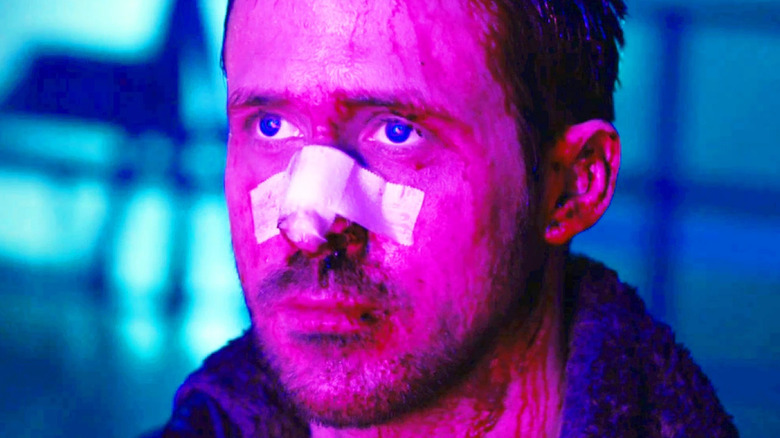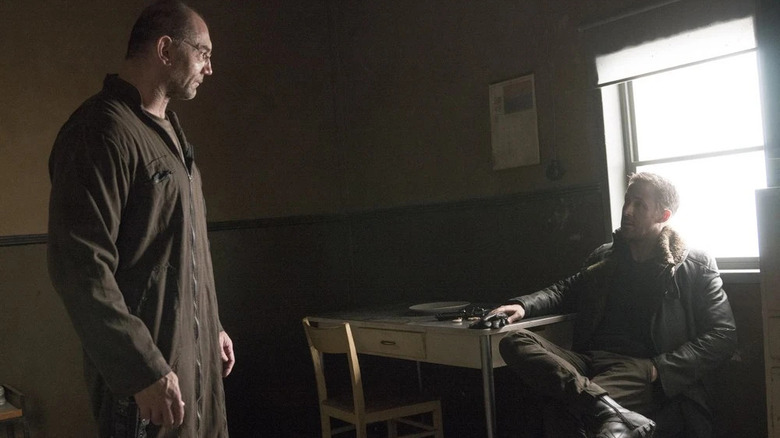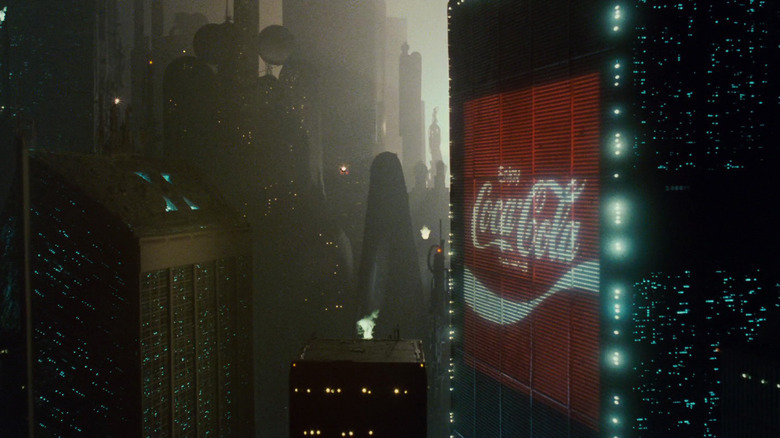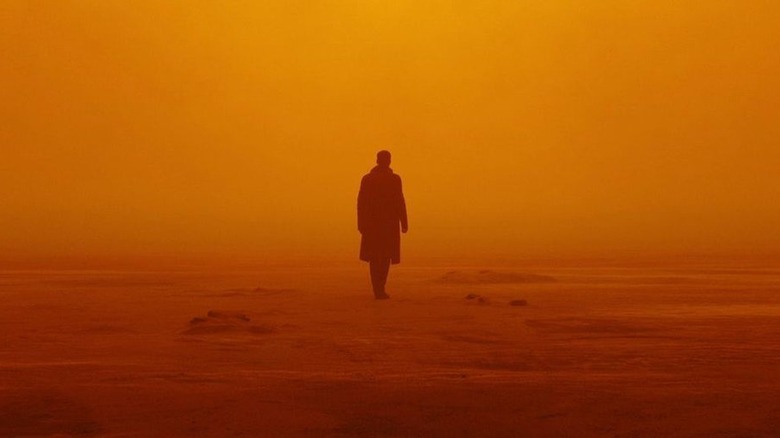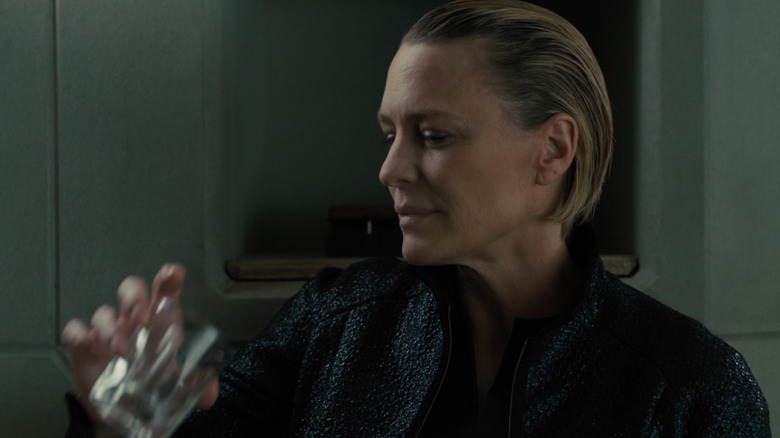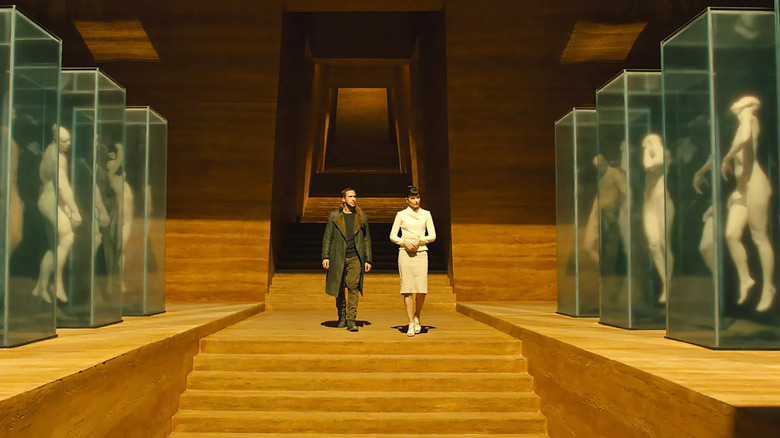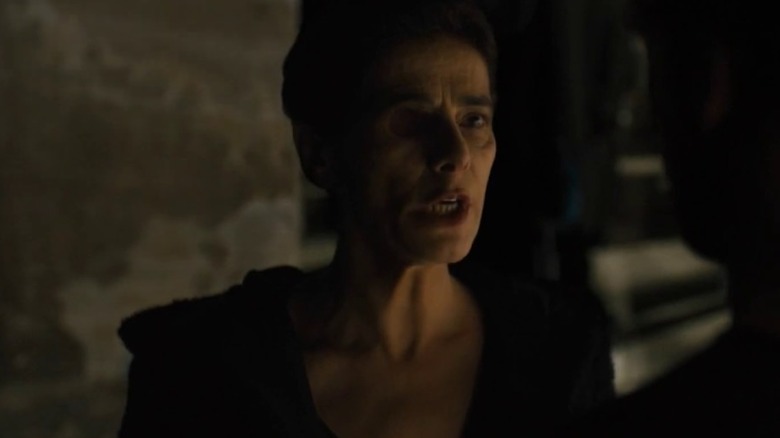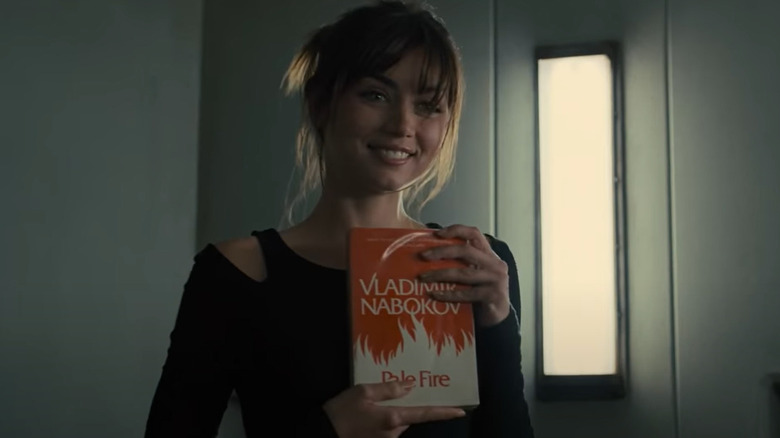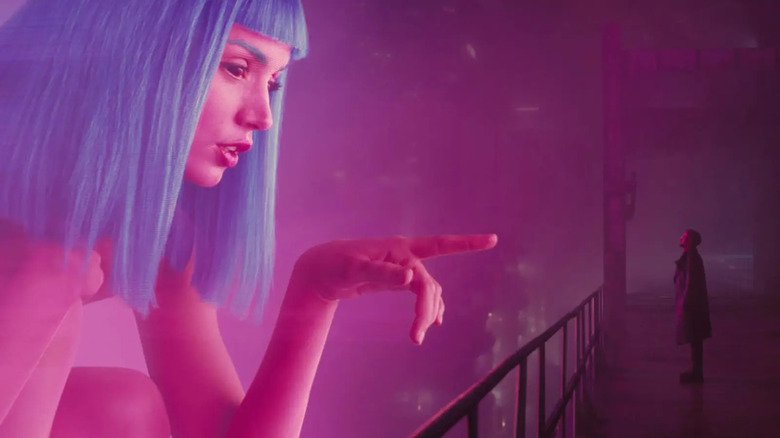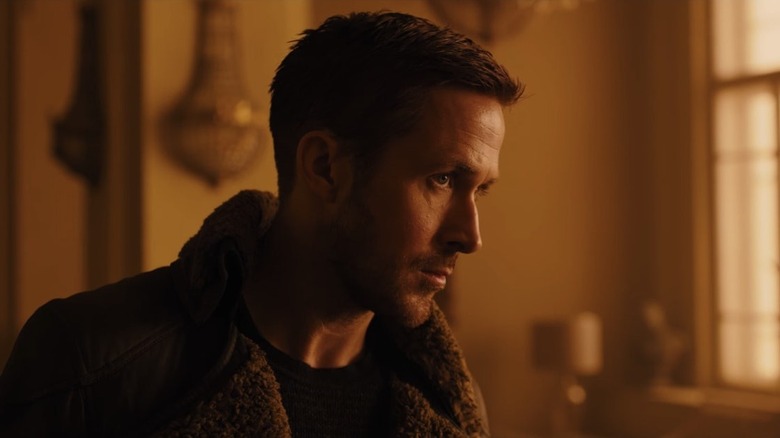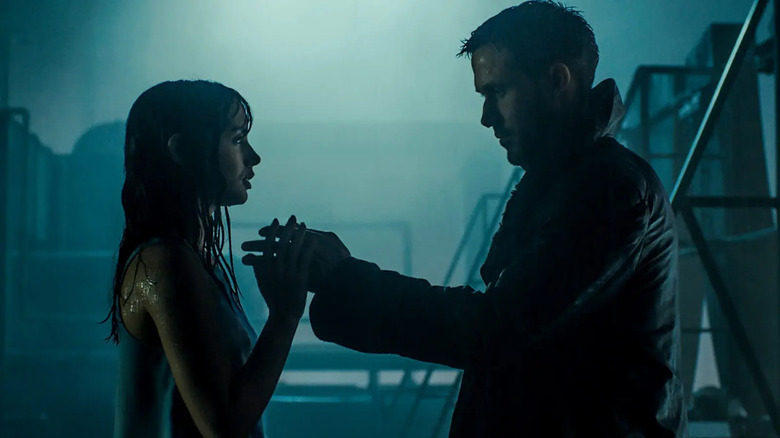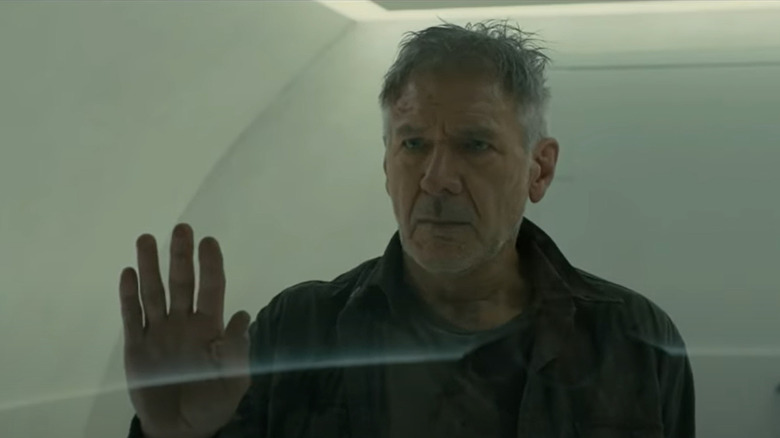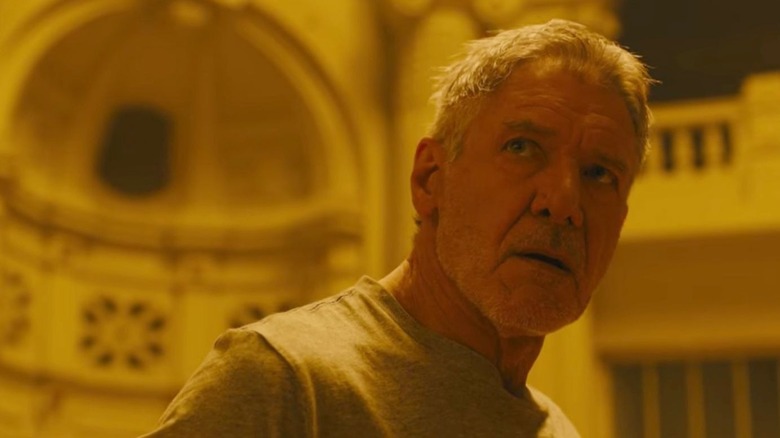The 6 Best And 6 Worst Things In Blade Runner 2049
"Blade Runner 2049" was a well-received sequel to a cult classic that went years without a proper big screen follow-up. The notion of pulling it off only got more difficult as the years went on and the influence of 1982's "Blade Runner" continued to expand. According to many critics, director Denis Villeneuve pulled it off marvelously. And exactly like its predecessor, "Blade Runner 2049" underperformed at the box office. But while it depends on who you ask, the successes of "Blade Runner 2049" outweigh its failures.
But even many of its advocates will admit that "2049" is not a flawless movie. Even if we set aside the fact that it's living in the giant shadow of director Ridley Scott's original "Blade Runner," "2049" has some bumps. Fundamental casting and editing choices made during production led to flaws that stick out years later. For all the great moments in "Blade Runner 2049," there are other choices that don't make sense or simply could've been improved on. These dozen scenes encapsulate the best and worst things in Villeneuve's approach to the storied cyberpunk universe.
Best: The opening sequence featuring Dave Bautista
Introduced in a short film released to promote the movie, Dave Bautista's character only appears in one scene in "Blade Runner 2049." Despite the lack of screen time, the former WWE star gives an extremely memorable performance. In the film's opening minutes, K (Ryan Gosling) enters the home of a farmer named Sapper Morton (Bautista). K is there to retire Sapper, an older model replicant, which sounds harmless until we recall that "retirement" is a standard law enforcement euphemism for execution in the "Blade Runner" universe. K succeeds in his mission, but not before the two exchange some words riddled with foreshadowing.
For one, K establishes he is a new model replicant who does as he's told with pride. He doesn't consider retiring Sapper killing his own kind. Sapper tells K that he can only think this way because he's "never seen a miracle." Later in the movie, we learn this ambiguous phrase is an allusion to the child Deckard (Harrison Ford) and Rachael (Sean Young) conceived following the events of the first "Blade Runner." The organic birth of a child from the body of an artificial replicant is considered a miracle and, for reasons that quickly become obvious to viewers, Sapper felt the need to shelter Rachael and the child. K finds Rachael's bones buried in Sapper's front-yard, which sends K on his next mission in search of the miracle child. This encounter sets the philosophical tone for the whole movie while introducing key plot elements.
Worst: Product placement
The dystopia of "Blade Runner 2049" is bleakly gorgeous, but this largely cohesive aesthetic makes some elements stick out like sore thumbs. In this respect, the product placements are the worst offenders. Of course, the world of "2049" cyberpunk LA would be full of advertising, but isn't it a little convenient — and distracting — how so many brands of "2049" also exist for viewers to patronize here in the real world?
Companies like Atari, Cuisinart, and Polaroid have apparently all survived nearly apocalyptic conditions and regime changes. The product placement for Coca-Cola is the loudest of all. Some critics question the inclusion of all this product placement, which is all well and good. However, we'd argue that there are very unsubtle anti-corporate themes overarching the "Blade Runner" series — the bad guys are the Tyrell Corporation and the Wallace Corporation, after all — and the Coca-Cola ad in "Blade Runner 2049" is a reference to the original "Blade Runner." For that matter, the $150 million budget of Denis Villeneuve's film only gets paid because of the Warner Bros. corporation; there isn't a production with the scale and scope of "2049" that could easily avoid marketing deals that arguably interfere with the art.
Best: Cinematography
You can't talk about "Blade Runner 2049" without talking about Roger Deakins' Oscar-winning cinematography. The legendary director of photography was the cameraman behind many Coen Brothers' masterworks like "Fargo" and "No Country for Old Men," but he also shot the Bond film "Skyfall" and the one-shot war epic "1917," which earned him another Oscar. Denis Villeneuve and Deakins previously collaborated on 2013's "Prisoners" and 2015's "Sicario," but "2049" is without a doubt their finest team-up.
Not only is "2049" filled to the brim with jaw-dropping shots, but the camera is imbued with a sense of fluid motion that makes each scene flow into the next. Through the cinematography, Deakins allows the film to inaudibly communicate K's feelings and motivations, enhancing Gosling's subtle performance. This aspect of the movie goes hand in hand with its unbelievable production design, so much so that it's impossible to talk about one without feeling like you're shortchanging the other. Nevertheless, Deakins' work on "2049" is worth a shout-out on its own.
Worst: Robin Wright
Across the board, the actors in "Blade Runner 2049" — even those with spotty track records — give pretty captivating performances. The one misfire in the strong supporting cast is Robin Wright, who plays K's commanding officer Lieutenant Joshi. The writing and the execution of the character results in Wright giving a wooden performance that feels at home in a different movie entirely. It's too bad the esteemed actress wasn't given more to work with.
It also doesn't help that Joshi gets saddled with all the worst and most hackneyed lines in the movie. This includes the ham-fisted platitudes she recites to K like, "The world is built on a wall that separates kind. Tell either side there's no wall, you've bought a war ... or a slaughter." The way the character awkwardly keeps referring to the world with lines like, "This breaks the world, K," perfectly encapsulates her lack of cohesion with the rest of the movie. Plus, Joshi doesn't seem to believe in anything outside of the system she works for, making her a boring character. With all the other great characters and performances, it's easy to forget Wright is in the movie at all.
Best: Production design
The visuals of "Blade Runner 2049" are its biggest strength. It achieves a distinct style of its own, without straying from the fundamentals of what makes the "Blade Runner" universe feel like itself.
It avoids looking like a generic sci-fi film thanks to the various aesthetics seen throughout the movie. From the neon underbelly of the city to the Brutalist-inspired architecture of the skyline and the halls of the Wallace Corporation to the desert wasteland of Las Vegas, "2049" shows it all. If you watched Villeneuve's "Dune," you know the director understands how to use a massive budget to create a visually distinct sci-fi world.
It's not just world-building through set design and lighting that makes "Blade Runner 2049" look fantastic, although those are major factors; it's the small details that make it feel real. You can see the care put into props and costumes and all the physical elements of the production. Not relying heavily on CGI, as it turns out, can make a world feel quite believable.
Worst: The replicant resistance is underutilized
There is a great potential for a thematic exploration of replicant rights and organization in "Blade Runner 2049," which is ultimately wasted. The replicant resistance is used to move the plot forward and cast aside without any real exploration of its characters or their ideology. Instead, K doesn't even meet the movement's leader Freysa (Hiam Abbass) until the final act of the movie.
At that point, she explains that she and the others saved him from death and now they need him to kill Deckard in order to protect all replicant life. It is a bit of a rushed scene and Freysa's reasoning for wanting Deckard dead feels a bit flimsy. She says he is a danger, but — as argued in this Reddit thread – the resistance should have plenty of agents capable of killing him, so why ask K to do it? Essentially, this scene acts as a way to usher our protagonist to the movie's final set piece.
The replicant resistance could have been a big thematic point of the movie, but its motivations aren't explored enough. Ultimately, this underutilized faction ends up being one of the more disappointing aspects of "2049."
Best: Ana de Armas's breakthrough performance
While it didn't make the largest commercial splash, "Blade Runner 2049" skyrocketed the career of one of its stars. Ana de Armas would shortly thereafter star in Rian Johnson's "Knives Out," a role that led her to even greater fame, but "2049" was the most elaborate and expensive production the Cuban actress had worked on before that point. Before playing Joi in the cyberpunk mystery, De Armas starred in numerous films, mainly in Spanish. A great deal of the actress' early career was spent cutting her teeth in Spanish language telenovelas.
While she wasn't an established movie star at the time, De Armas gives one of the most compelling performances in "2049." As an AI, Joi struggles with her inability to physically express her love for K, as well as many additional inconveniences and obstacles that come with being a sentient hologram. Through her, we see how various forms of artificial life — not just replicants — in this universe all strive for fulfillment and independence. De Armas sells Joi as a character with a deep interiority, which makes her tragic fate all the more depressing, especially when her likeness is still rendered as a gigantic promotional hologram serving as a haunting reminder to K of what he's lost.
Worst: The movie falls into a lot of misogynistic tropes
Ana de Armas is great in this movie, but her character has at least one major flaw. Joi exists to complicate K and serve his storyline and, in the fiction of "Blade Runner 2049," that's who Joi is. She is decisively not a strong female character in any sense of the phrase, and this lack of representation is sometimes lodged as a criticism against the movie. The treatment of women in "Blade Runner 2049" was a hot topic after its release, with fans and critics pointing out that despite it being a mystery about women — specifically Rachael and her mysterious daughter — the female characters don't have much agency.
This is largely true. In fact, the majority of the film's female characters end up dying in order to move the plot forward. Even Niander Wallace's (Jared Leto) replicant accomplice Luv (Sylvia Hoeks) — who gets more screen time than Leto's villain despite being billed as a side character — meets a grisly end.
In responding to the criticisms of the film's treatment of women, Villeneuve told Vanity Fair he believes the women in "2049" have depth even if they are mistreated. "Blade Runner is not about tomorrow; it's about today. And I'm sorry, but the world is not kind on women," said the director.
Best: Deckard vs. K
The first two-thirds of "Blade Runner 2049" build toward the encounter between K and Deckard. If you know going in that Harrison Ford returns, you still end up waiting practically the whole movie to see him back in his iconic "Blade Runner" role. After about two hours, he finally shows up and his scenes make for some of the best parts of "2049." The fight between Deckard and K and the conversation that follows are both highlights of the movie.
After meeting for the first time, K is aware Deckard distrusts him and begins to flee. Traps explode and corner him in a lounge room where the two men fight. It's a gorgeous and visceral action sequence lit by strobes and hologram projections. However, once the two get to talking, the exchange where Deckard explains what happened after the events of the original film is illuminating, to say the least. It bridges the gap between the two movies and comes straight from Deckard's mouth, making it all the more convincing. The two only get a brief time to speak before they are found by Wallace's goons, but the scene is a high point of the film.
Worst: It's too long
Some of us around here would love to see the original four-hour cut of "Blade Runner 2049" but we understand that we might be in the minority in this respect. In fact, a good number of well-respected outlets and reviewers, including Ridey Scott, criticized "2049" for being overly long at nearly three hours in run time. At 164 minutes, the film is a behemoth and a slow burn, making it hard to sit through for some viewers.
Even some defenders of the movie's creative choices can admit that parts of the film drag. While all the plots are important, the middle sections of the movie contain many scenes of K investigating the case with no real forward momentum. This adds texture to the world Villeneuve and his crew have created but, especially because the production design is stellar throughout, some of the world-building scenes could stand to be cut.
Best: 2049 leaves Blade Runner's biggest mystery ambiguous
For years after the initial release of "Blade Runner," there were arguments concerning the true nature of the movie's protagonist, Rick Deckard. "Is Deckard a replicant?" became the biggest and most important mystery of the film's legacy. Ridley Scott's later edits of the film clear the air a little bit about his intentions. The ending of "Blade Runner: The Final Cut" makes it pretty clear that Deckard is a replicant. Through this lens a lot of the film's other mysteries fall into place. Still, there isn't empirical evidence that this is true. While "Blade Runner 2049" is a direct sequel, in many ways it manages to keep this issue ambiguous to the end.
"Blade Runner 2049" sees K chasing down the child of Deckard and Rachael because the child's existence is a threat to the social order. But regardless of if this child was conceived by two replicants or a replicant and a human, she's still a miracle baby either way; the specific nature of Deckard's humanity matters very little. Likewise, Deckard's status as a human or a replicant is immaterial to why he becomes a fugitive and needs to hide, leading to where he is found in "2049." If you think Deckard is a replicant, the movie works; if you think Deckard is a human, the movie works. But just to clear the air, Deckard is definitely a replicant. That's the whole point of the first "Blade Runner."
Worst: But why does Deckard age?
We've established that Deckard is definitely a replicant, right? Even Ridley Scott has confirmed this. So then, if that's the case, why does he age? For his time, Deckard would've clearly been an advanced model that lives longer than the standard four years allotted to Roy Batty and the other rogue replicants of the first "Blade Runner." This is the only way he would still be alive for "2049." Of course, the other possibility is that Deckard is human after all.
The question that never really gets answered is whether replicants ever show signs of aging. We know they're essentially born into adulthood with implanted childhood memories, which is key to the plot of "2049." Fans have been asking about the mystery of Deckard's age since the "2049" trailer dropped, but five years later, it's simply still an unknown factor.
